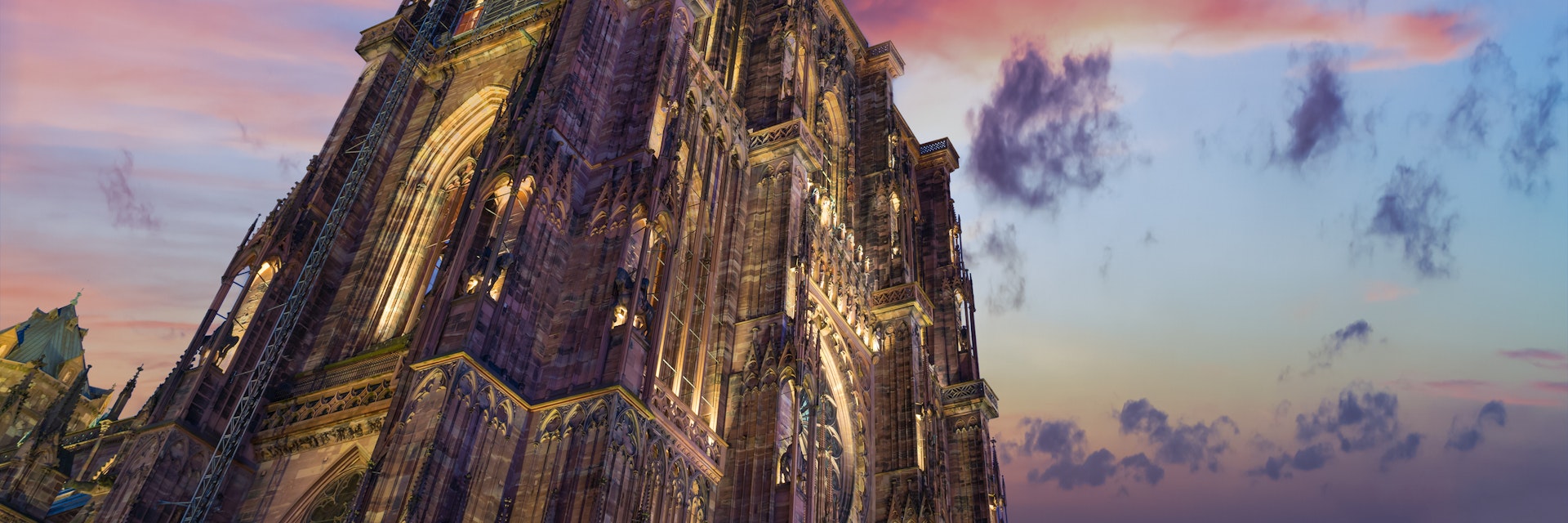Nothing prepares you for your first glimpse of Strasbourg's Cathédrale Notre-Dame, completed in all its Gothic grandeur in 1439. The lace-fine facade lifts the gaze little by little to flying buttresses, leering gargoyles and a 142m spire. The interior is exquisitely lit by 12th- to 14th-century stained-glass windows, including the western portal's jewel-like rose window. The Gothic-meets-Renaissance astronomical clock strikes solar noon at 12.30pm with a parade of figures portraying the different stages of life and Jesus with his apostles.
Victor Hugo declared it a ‘gigantic and delicate marvel’; Goethe professed that its ‘loftiness is linked to its beauty’; and, no matter the angle or time of day, you too will be captivated by this red-sandstone monolith that is at once immense and intricate.
A spiral staircase twists up to the 66m-high viewing platform, from which the tower and its Gothic openwork spire soar another 76m. As Hugo put it: ‘From the belfry, the view is wonderful. Strasbourg lays at your feet, the old city of tiled triangular roof tops and gable windows, interrupted by towers and churches as picturesque as those of any city in Flanders'.
The west façade, most impressive if approached from rue Mercière, was completed in 1284, but the 142m spire – the tallest of its time – was not in place until 1439; its southern companion was never built.
To appreciate the cathedral in peace, visit in the early evening, when the crowds have thinned, and stay to see its façade glow gold at dusk.






